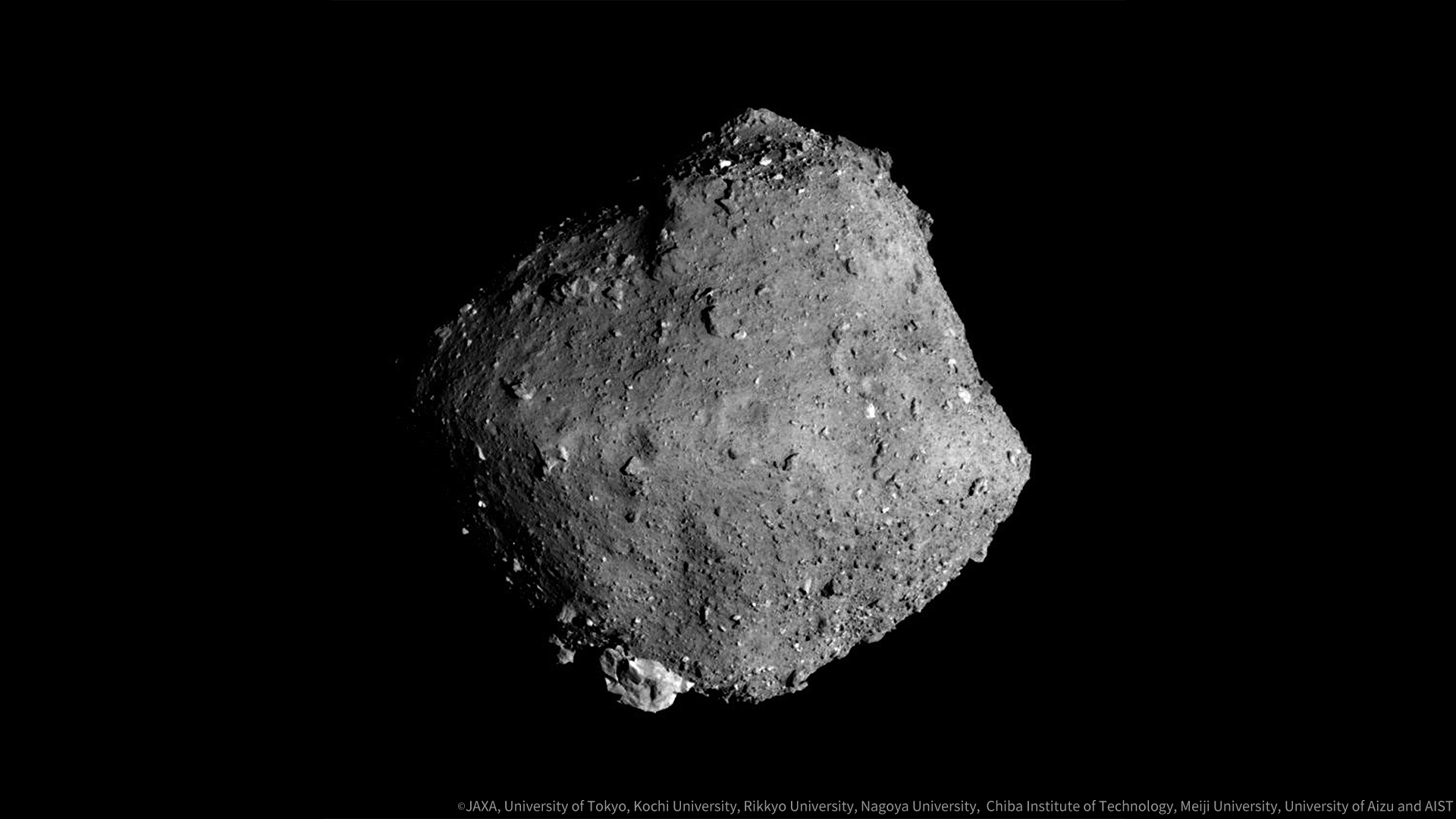
Sprit of Exploration

Sprit of Exploration
Hayabusa2, to Ryugu
Hayabusa2 reached the asteroid Ryugu, far into space at a distance of about 300 million kilometers away from Earth.
Ryugu itself is only 900 meters.
That's like taking aim from Japan for a target in Brazil that's only 6 centimeters in size.
Artificial crater created by firing a mass of pure copper
On April 2019, the asteroid explorer "Hayabusa2" succeeded in creating an artificial crater on the surface of the asteroid Ryugu. This feat made news and was widely reported on TV and the Internet. What people saw then were fuzzy images of a world in black and white with what looked like rough rocks. And alongside these images, the world saw the Hayabusa2 team members in uniform inside the JAXA control room, joyously smiling from ear to ear. These images showed the world that this first-ever impact experiment on an asteroid was actually a collaborative work between humanity, here on Earth, and the explorer flying far out in space. This was a moment of great excitement, not only for the Hayabusa2 team members but also for everyone watching the event.
One of the greatest missions that Hayabusa2 had to accomplish was to detach an impact device at an altitude of 500 meters above Ryugu, make the device run on its internal timer, and strike the surface of the asteroid with a pure copper mass at high speed in order to create a crater. Takanao Saiki, the Project Engineer who worked on developing this impact device, was seen among the team in the images mentioned earlier.
"My current job is to manage the overall operation of the asteroid explorer. But during the phase when the explorer was being created, I was the person responsible for developing the impact device. This impact device was absolutely essential to this project, so any delays in its development would jeopardize the launch of the asteroid explorer itself. But the time that we had from the start of the project to the launch of the explorer was extremely short, so it was really difficult to make sure that we were proceeding on schedule."
The impact device was made by using an integrated system, in which the device was developed with the assistance of engineers working at manufacturing companies, with JAXA overseeing the overall development. Saiki's expertise was in the overall system of the explorer, and in designing its trajectory. The impact device, designed to detach itself from the explorer above Ryugu, is in itself like a small satellite. Thus, Saiki says that his previous experiences in developing small satellites and in designing trajectories proved very useful in the development of this impact device.
Hayabusa2 incorporated the technologies that were used to build the first explorer, Hayabusa, in order to shorten its lead time for development. However, this was not easy; even if we take one example of working on a detachment device that was also installed in the first explorer, the task involved an arduous process of trying to develop the device while seeking to avoid encountering problems by endeavoring to apply what we learned from the previous Hayabusa mission. Among such difficulties, a complication that was unique to Hayabusa2 was in having to load explosives onto the impact device in order to create an artificial crater.
"It was about 5 kilograms of powerful explosives, so if it gets mistakenly ignited while it is being load onto the rocket, we would have a catastrophic accident. This was not something we had to deal with when we worked on the first explorer, so it was extremely nerve-wracking."
<The artificial crater created by the impact device on the surface of Ryugu>
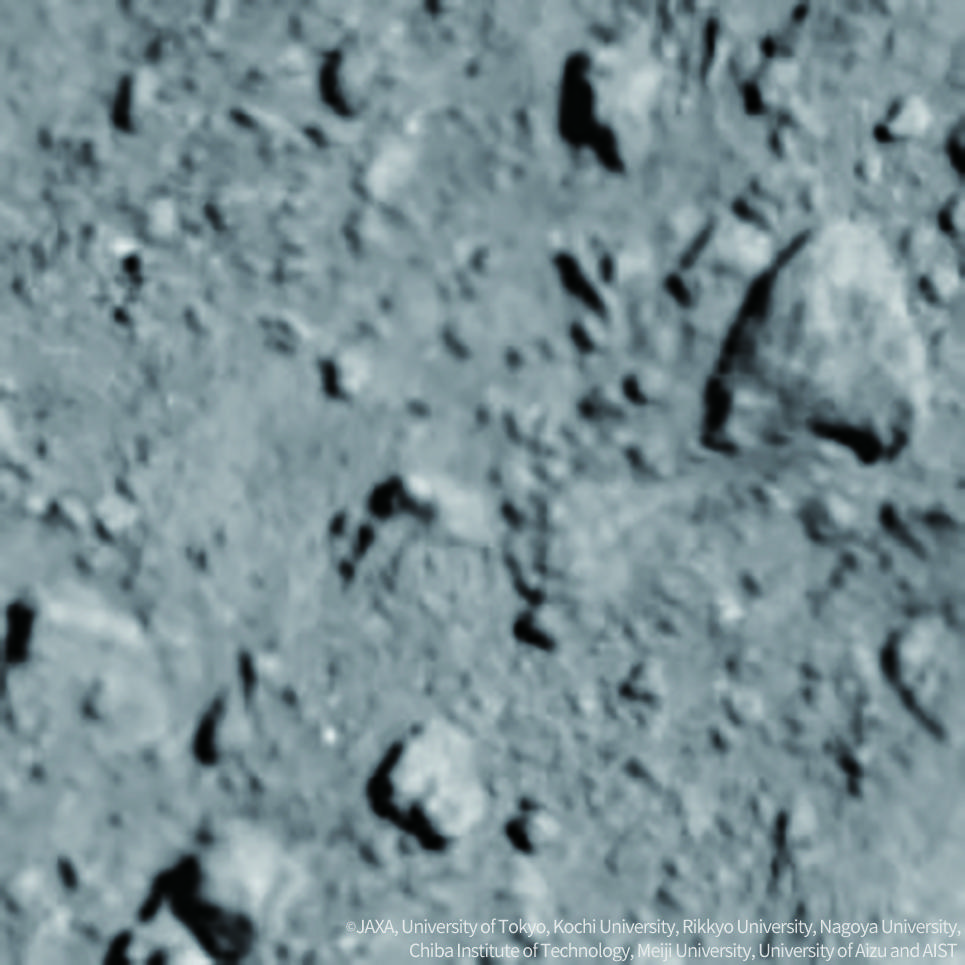
(photographed March 22, 2019)
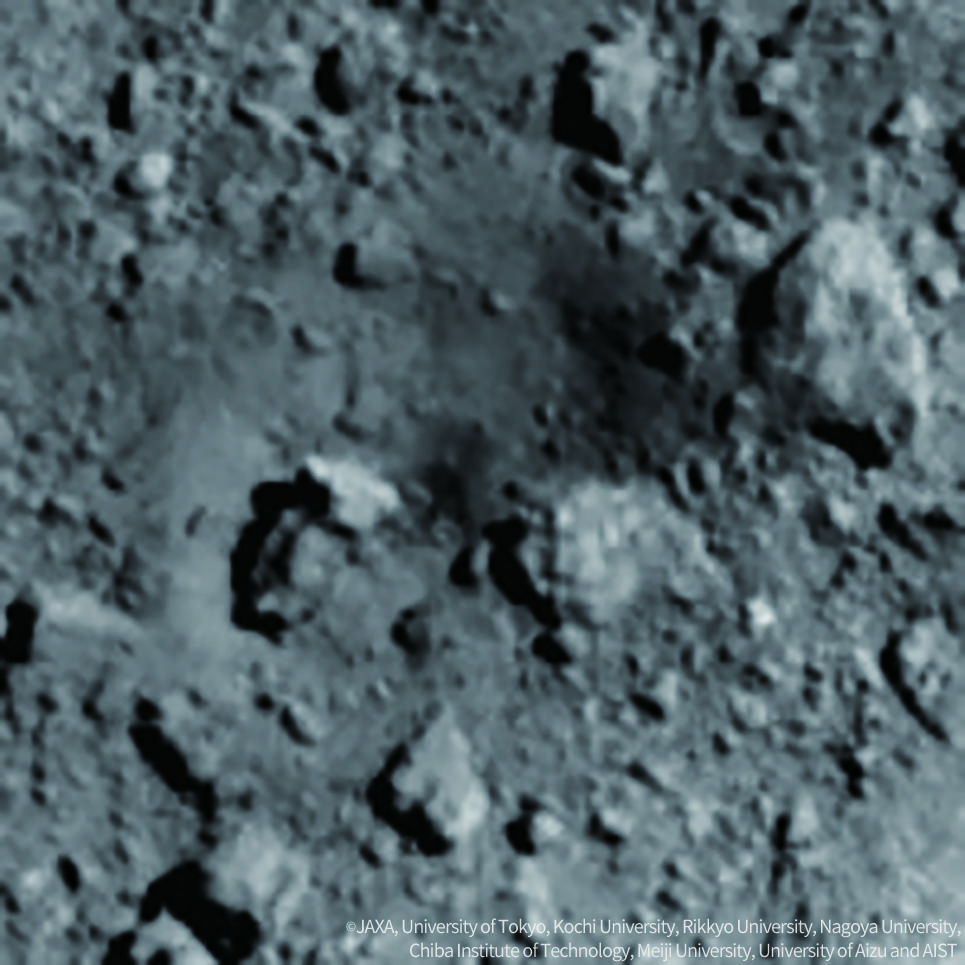
Bringing substances from Ryugu back to Earth
The first touchdown (contact with Ryugu's surface) in February of this year was a stunning success, in which samples were acquired from a site at a level of accuracy that was only about one meter away from the place that was aimed for. What made this accomplishment possible was the precise understanding that the team here on Earth had of the explorer's movements. "We conducted experiments on having the explorer land with precision on an asteroid. To do this, we built a model asteroid, and performed numerous simulations, sometimes even creating problematic situations on purpose. So I think the reason why we were able to achieve this success was because we repeatedly operated the explorer and conducted many training in order to be able to move the explorer at our will.

Saiki looks back, and says that what kept them going was their enthusiasm and persistence.
"When Hayabusa2 first started sending us images back from Ryugu in June 2018, we found that the surface of the asteroid everywhere was covered with more large rocks than we had imagined. Seeing this made us nearly despondent, because we didn't think we could find a place for the explorer to land. But we couldn't just bring it back home empty-handed, so we determined to find some way to touchdown, and kept observing the asteroid in order to find some way, to the point of obstinacy. So the reason why we were able to come thus far was because of the team's enthusiasm and persistence, which acted in a good way."
Following the remarkable accomplishment of creating an artificial crater on the surface of an asteroid, in April, the optical navigation camera telescope (ONC-T) installed onto the Hayabusa2 captured the fact that the landscape on the asteroid had changed over an area spanning about 15 meters. The team was faced with a succession of situations that required their meticulous attention.
Once the impact device was detached from Hayabusa2, the explorer needed to hide in the shadows of the Ryugu within the next 40 minutes, before the device was timed to detonate. Otherwise, Hayabusa2 would be in danger of receiving damage from the fragments that would be flying out in all directions from the impact device, caused by the powerful explosives used to accelerate the impactor away from the device, as well as from the rubble flying up from the surface of the Ryugu after impact has been made. What's more, even while taking shelter, Hayabusa2 had to accomplish another mission of releasing a small recording camera (DCAM3) to capture the moment of impact with Ryugu, and send those image data back to the explorer. This succession of processes, and other factors, made this an highly acrobatic operation."
The future mission is to have Hayabusa2 touchdown again near the crater that was created by the impact, collect the rocks and sand from the geological stratum that lies below the asteroid's weathered surface to obtain substances that would be less likely to have been affected by solar light and cosmic rays, and bring those samples back to Earth.
"However, we're faced with many issues regarding this second landing. We're working with a situation where there are hardly any flat surfaces, so if it is too difficult to land, we may consider aborting our attempt to touchdown. But even so, the sample that we acquired from the first touchdown and the images that have been captured up to now will give us precious data that will help us move forward in answering the mystery of the birth of our solar system."
After the first touchdown and sampling on February 22, Hayabusa2 will attempt another touchdown near the artificial crater it created by the impact experiment in April. Soon, another mission will be conducted to gather samples from below the asteroid's surface that have not been subject to space weathering, to bring us closer to solving the mystery of the birth of this solar system 4.6 billion years ago. The first-ever challenge for humankind, taken on by Saiki and his team, still continues.
(This article was developed based on information from an interview on May 13, 2019.)
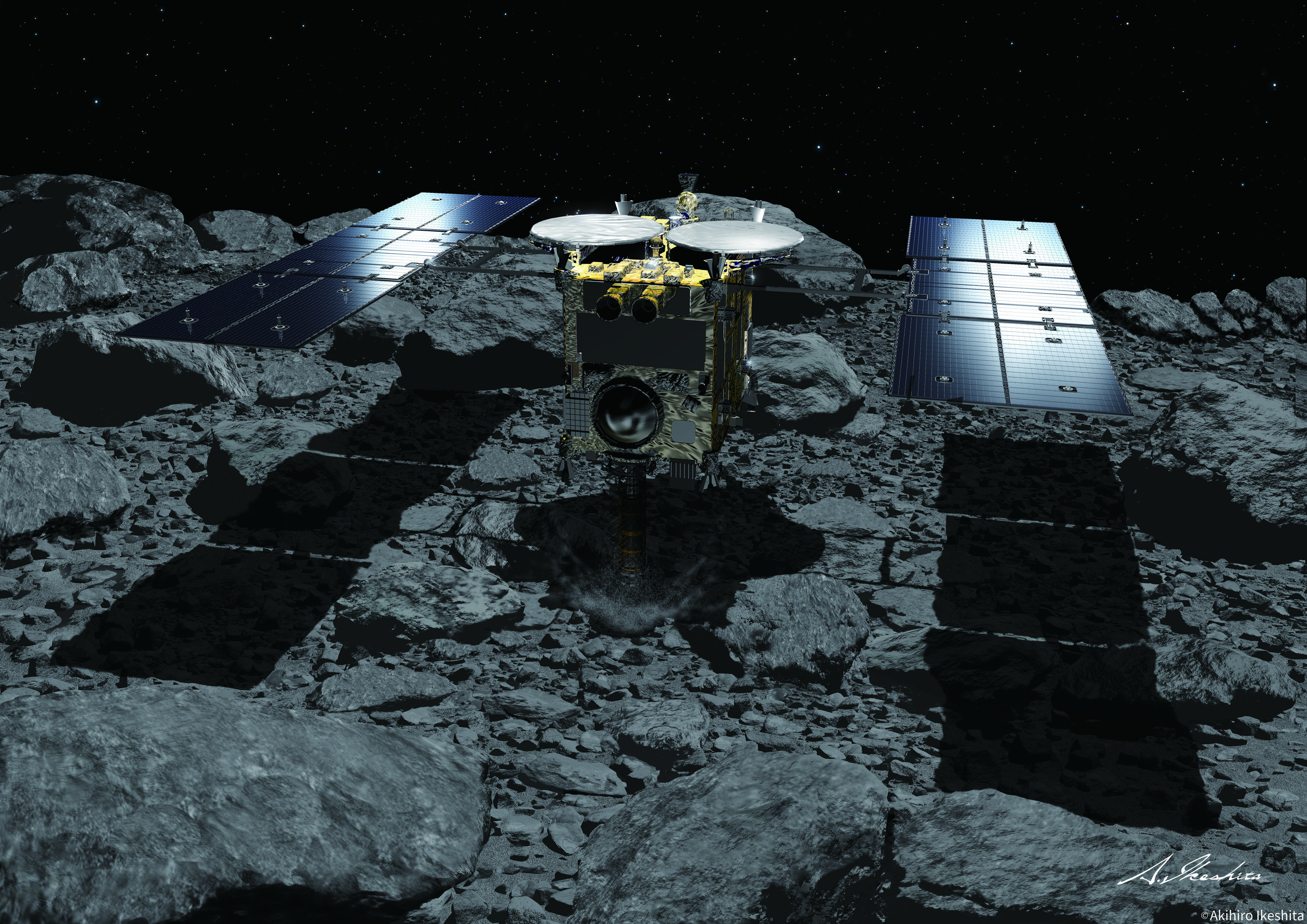
|
|
|---|

Profile
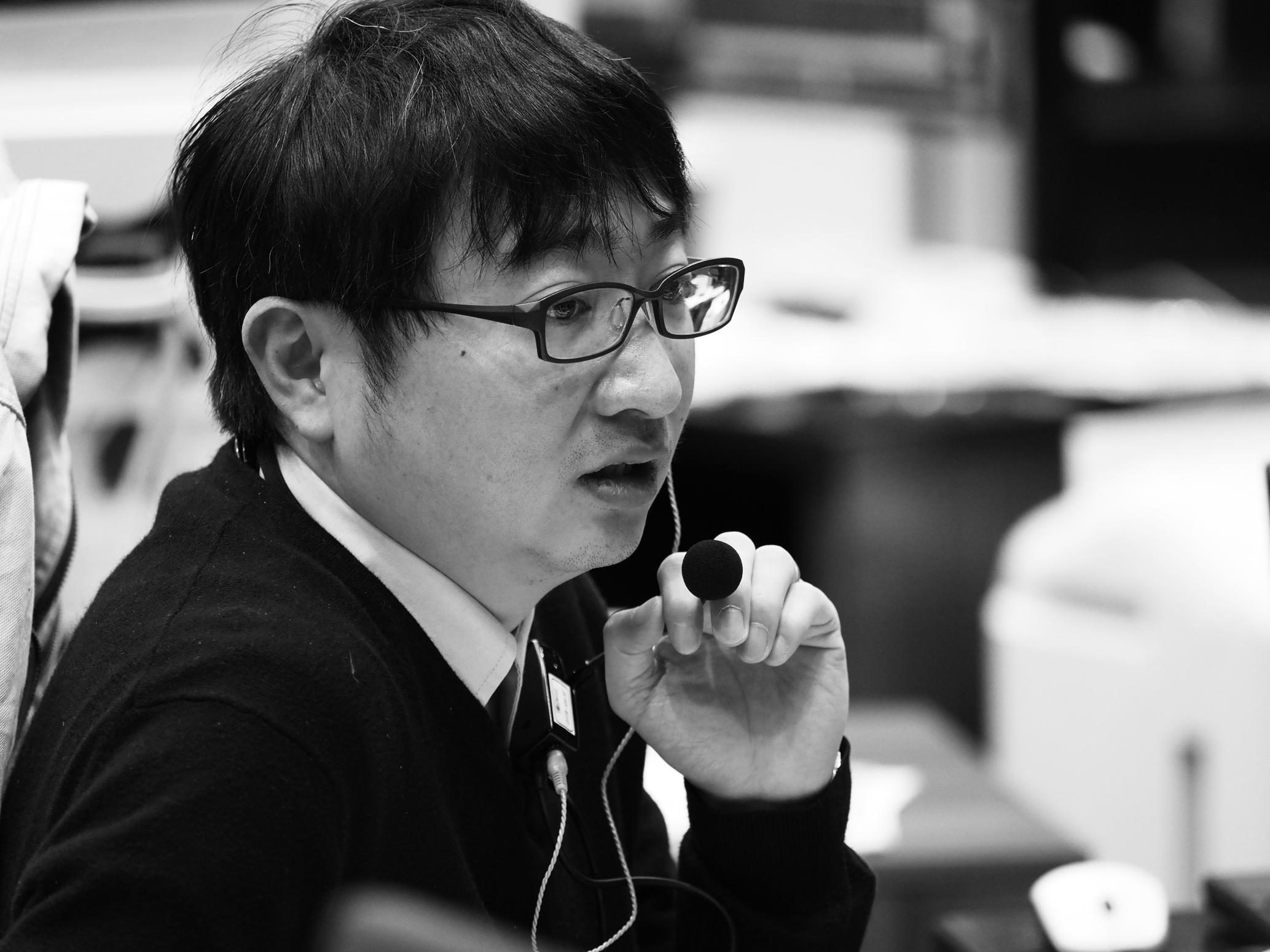
|
|
|---|
- Home>
- Global Activity>
- Public Relations>
- JAXA’s>
- JAXA's No.77>
- Sprit of Exploration